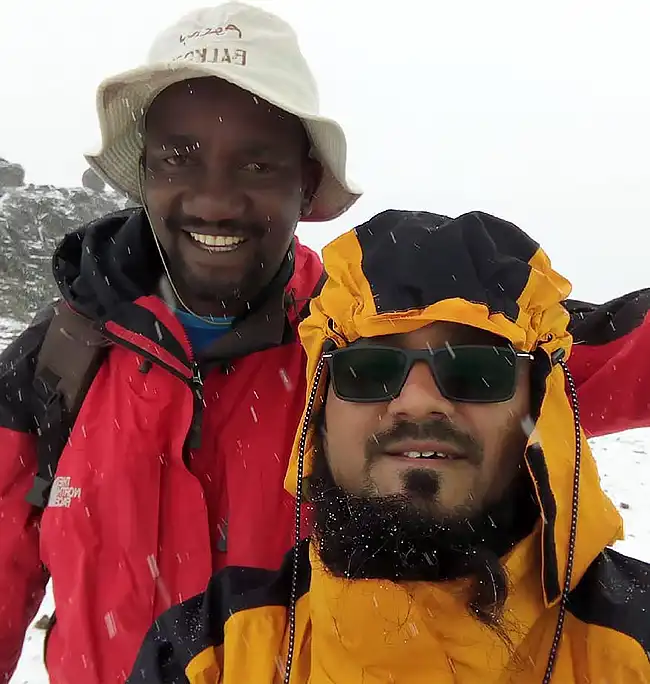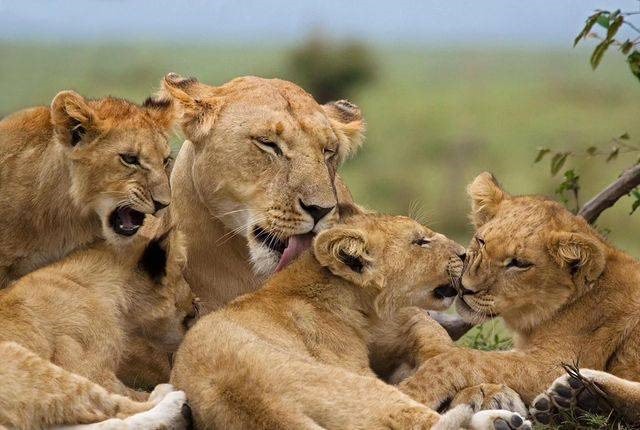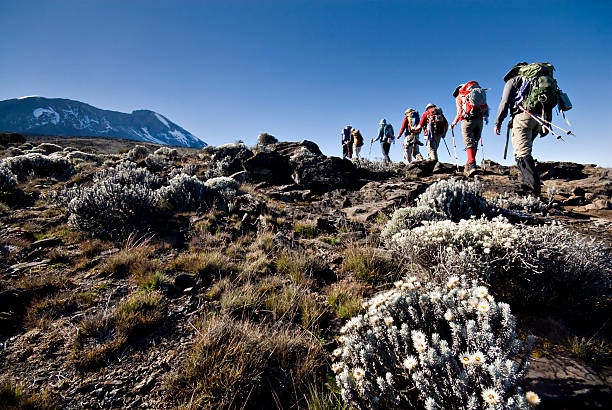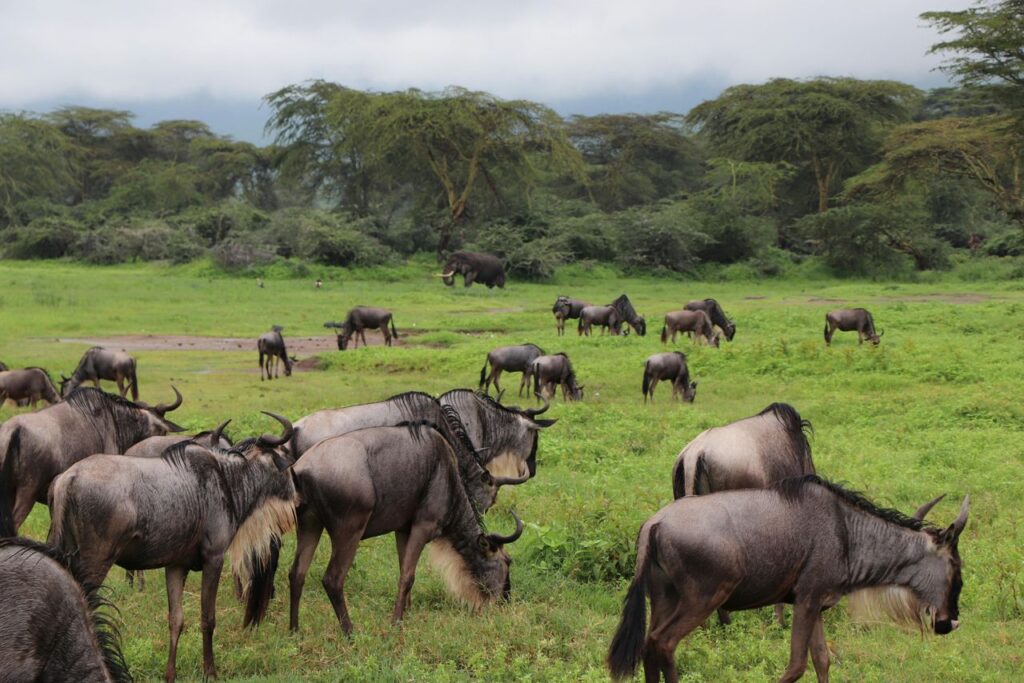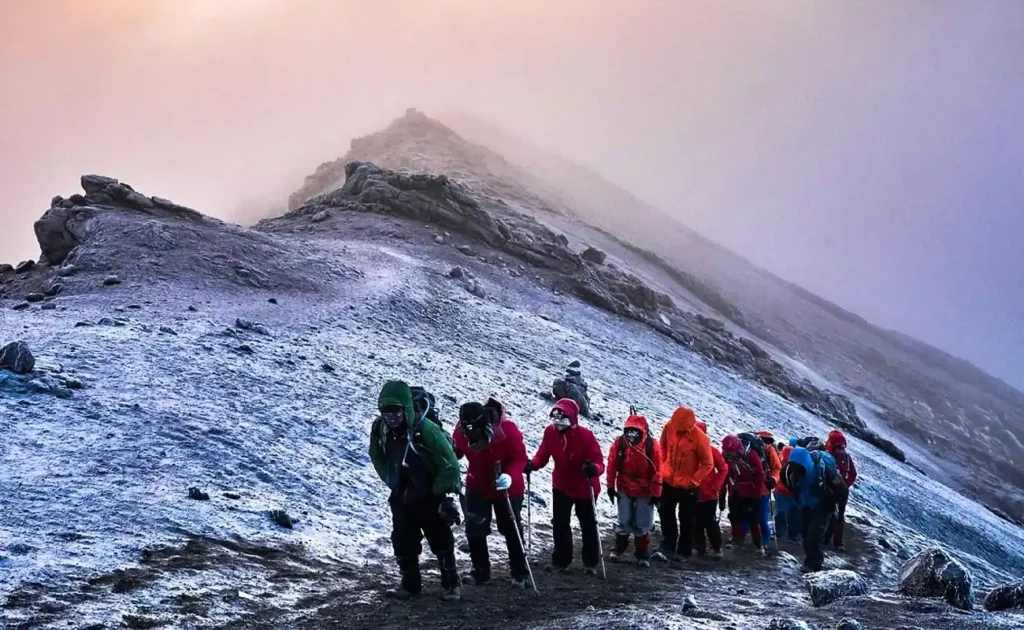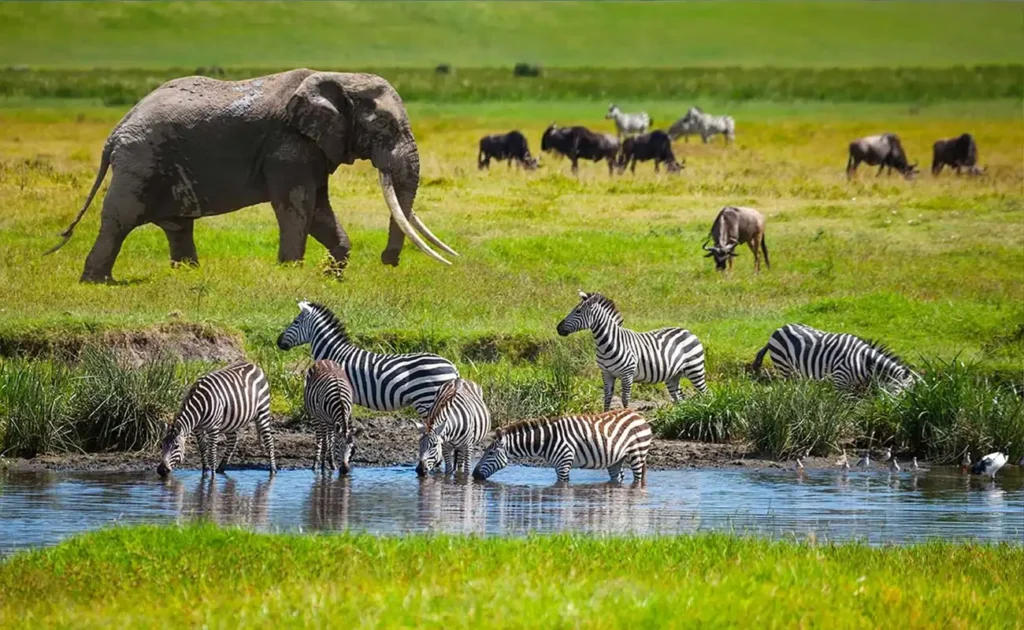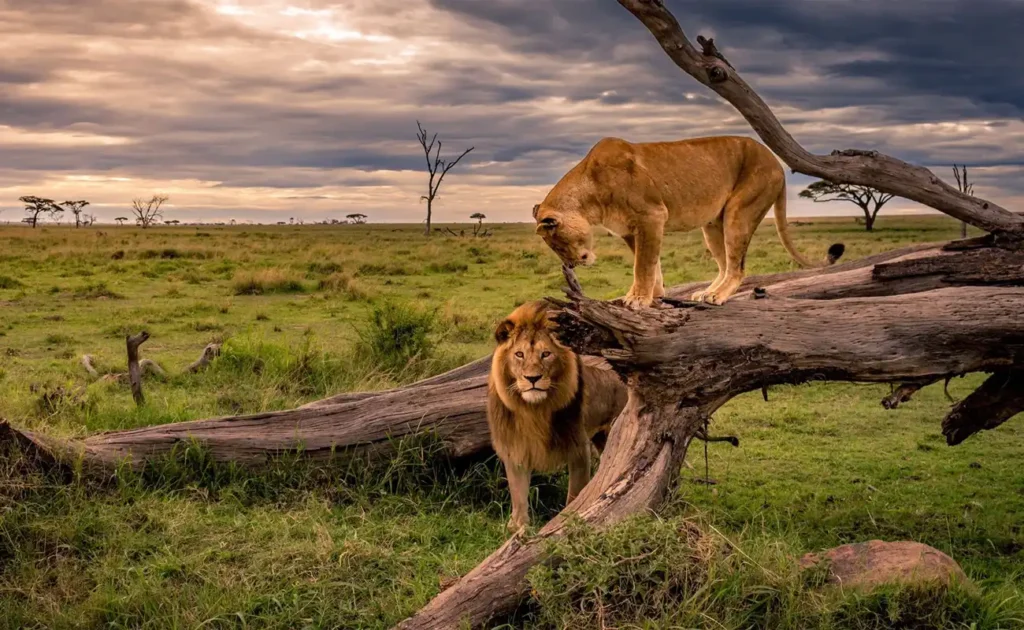The Great Wildebeest Migration is one of the most awe-inspiring natural events on Earth, attracting thousands of wildlife enthusiasts to Africa each year. This incredible journey spans the vast plains of Tanzania and Kenya, with over 1.5 million wildebeest, 250,000 zebras, and hundreds of thousands of gazelles embarking on a circular migration across the Serengeti and Maasai Mara ecosystems. Understanding this phenomenon is key to planning your migration safari, ensuring you witness one of nature’s greatest spectacles firsthand.
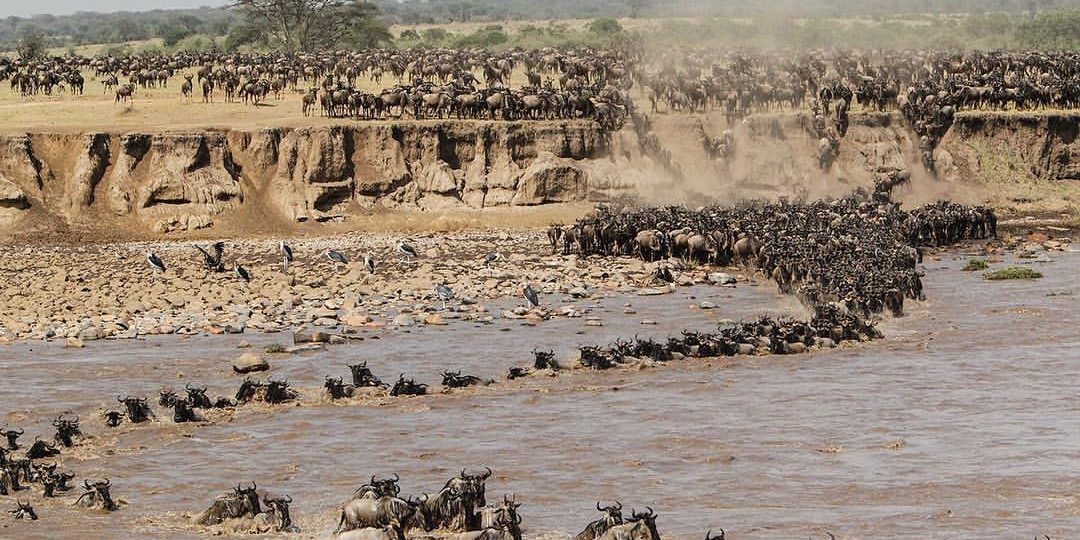
The river crossing is one of the most obstacle, but millions still survive.
Why Do Wildebeest Migrate?
The wildebeest migration is primarily driven by the search for food and water. Wildebeest follow the rains, moving in search of fresh grazing areas. This massive movement occurs in a cyclical pattern, ensuring the survival of the species by keeping them nourished throughout the year. Wildebeest migrate in herds for safety, as traveling in numbers offers protection against predators like lions, cheetahs, and crocodiles.
Where Does the Great Migration Start?
The Great Migration begins in the southern Serengeti plains of Tanzania. The first significant movement occurs around January when wildebeest give birth to over 500,000 calves during the calving season. From here, the herds start their journey northwards as the grass in the Serengeti dries up and they move in search of greener pastures.

A great Map of Migration
When is the Best Time for a Migration Safari?
To witness the Great Migration at its peak, timing is crucial. Here’s a breakdown of the best times and locations to see the migration:
- January to March: Calving seasonin the southern Serengeti. This period is perfect for witnessing baby wildebeest and predators like lions and cheetahs in action.
- April to June: The herds move north toward the central Serengeti. This time is less crowded with tourists but offers great game viewing.
- July to September: The famous river crossingstake place as wildebeest cross the Grumeti River in Tanzania and the Mara River into Kenya’s Maasai Mara. This period is regarded as the best time for a migration safari, as it showcases one of the most dramatic and dangerous parts of the migration, with crocodile attacks and predator hunts.
- October to December: The herds return south to Tanzania, completing their circular journey. This period is less popular but offers excellent opportunities for migration safaris with fewer crowds.
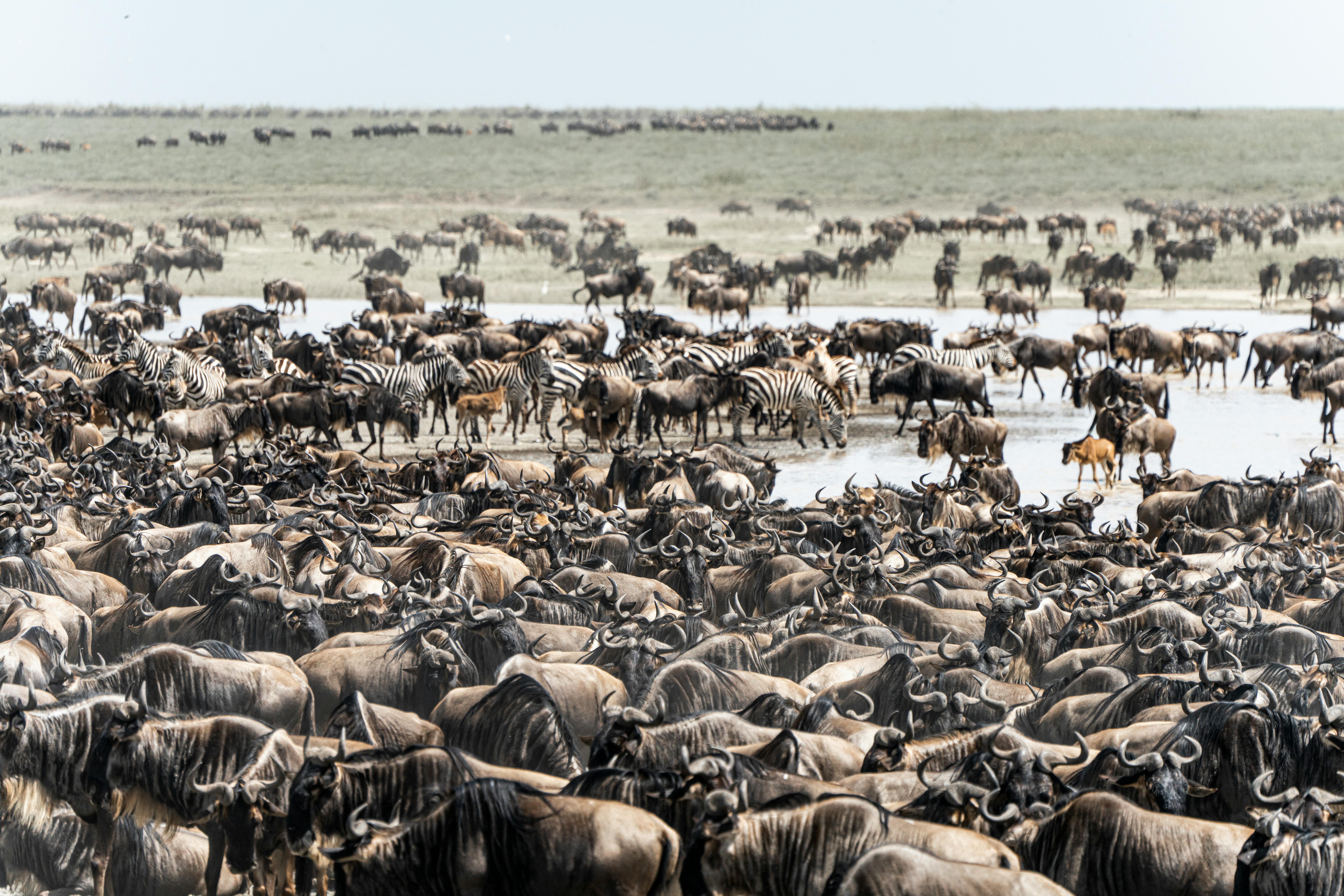
What Month is the Great Migration in Africa?
The Great Migration is a year-round event that varies by location. Key months include:
- July to September: The most popular time to see the migration, especially during the dramatic river crossings in Kenya’s Maasai Mara.
- January to March: The calving seasonin Tanzania’s southern Serengeti.
Serengeti Migration: Best Time to Visit
The best time to visit the Serengeti for the migration depends on what you want to see:
- December to March: Ideal for witnessing the calving seasonin the southern Serengeti.
- June to October: Prime time for witnessing the Great Migrationas it passes through the central and northern Serengeti, with the added thrill of river crossings.
Kenya Migration Safaris: Where and When
While the migration primarily takes place in Tanzania, the herds cross into Kenya’s Maasai Mara around July to September, making it an excellent destination for migration safari packages. This is when you can witness the famous Mara River crossing, one of the most dangerous parts of the migration. Kenya migration safaris offer shorter yet more concentrated wildlife viewing experiences.
Wildebeest Migration Map: Tracking the Movement
Having access to a wildebeest migration map is essential for planning your safari. The map follows the herds’ movement through the Serengeti and Maasai Mara:
- January to March: Southern Serengeti(calving season).
- April to June: Central and Western Serengeti, moving towards the Grumeti River.
- July to September: Northern Serengetiand Maasai Mara, crossing the Mara River.
- October to December: Returning south to the Serengeti.
|
Time Period |
Location | Activities & Highlights | Wildlife Experiences |
| January to March | Southern Serengeti | – Calving season begins, with thousands of wildebeests giving birth. – Large herds can be seen grazing in the nutrient-rich grasslands. |
– Witness newborn calves and the protective behavior of mothers. – Predators such as lions and hyenas are active, hunting for vulnerable calves. |
| April to June | Central and Western Serengeti | – Herds start moving towards the Grumeti River. – Rainfall rejuvenates the grasslands, attracting wildebeests and other herbivores. |
– Great opportunities for wildlife photography and spotting diverse animals like zebras, elephants, and antelopes. |
| July to September | Northern Serengeti & Maasai Mara | – The wildebeests begin to cross the Mara River in search of greener pastures. – This is the peak of the migration season. |
– Dramatic river crossings; great chance to see crocodiles lurking. – Massive herds of wildebeests and zebras can be observed. |
| October to December | Returning South to the Serengeti | – Herds start their journey back south towards the Serengeti. – Migration slows down as animals return to the southern plains. |
– Ideal for observing large herds grazing peacefully in the Serengeti. – Predators remain active as they follow the migrating herds. |
Summary of Migration Phases:
- Calving Season (Jan-Mar): A time of new life, with a focus on the southern Serengeti.
- Grass Growth (Apr-Jun): Herds move toward the Grumeti River, attracted by fresh grass.
- River Crossings (Jul-Sep): The thrilling Mara River crossings, where the greatest action occurs.
- Return Journey (Oct-Dec): A gradual return to the southern plains as the cycle begins anew.
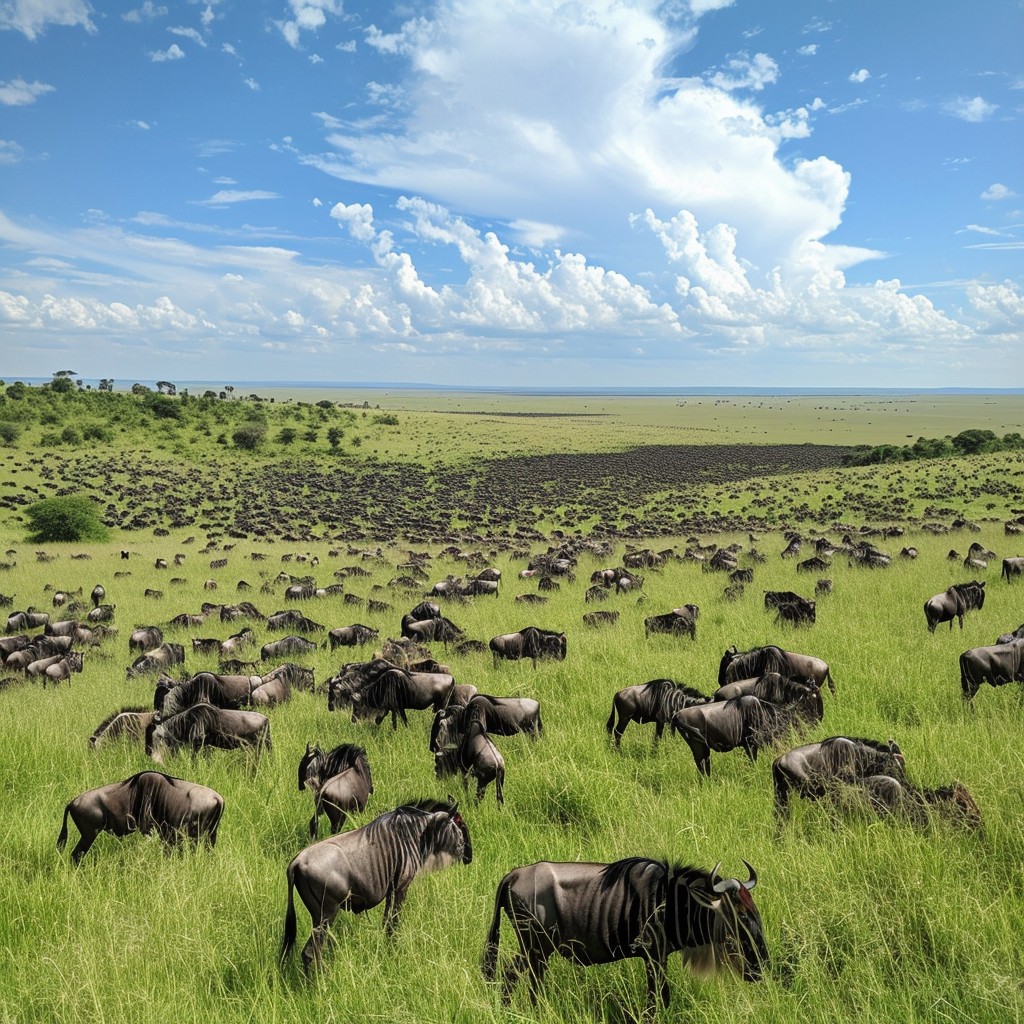
the great migration of Serengeti national park.
How Many Wildebeest are in a Herd?
The wildebeest herds during the migration are immense, with over 1.5 million wildebeest forming massive groups as they move. These herds are accompanied by zebras, gazelles, and other herbivores, creating a bustling and diverse ecosystem.
Why Did the Great Migration Happen? (APUSH)
In an American historical context, the Great Migration also refers to the mass movement of African Americans from the rural South to urban centers in the North between 1916 and 1970. This migration was driven by factors such as economic opportunities, racial segregation, and social upheaval in the South. While unrelated to the wildlife migration of Africa, this historical event reshaped the cultural and social landscapes of the United States.
The Great African Migration: Facts and Insights
Here are some key wildebeest migration facts:
- The Great African Migrationinvolves over 5 million wildebeest, 250,000 zebras, and hundreds of thousands of gazelles.
- The migration covers nearly 1,000 kilometerseach year across Tanzania and Kenya.
- River crossings, particularly at the Maraand Grumeti Rivers, are the most dangerous part of the journey, where predators like crocodiles and lions lie in wait.
Great Migration Safari Packages: Planning Your Trip
Several great migration safari packages are available for travelers, ranging from budget safaris to luxury fly-in options. Whether you’re seeking an immersive experience with mobile camps that follow the herds or a more relaxed luxury lodge stay, there’s a package for everyone. Consider a Serengeti migration safari or a Kenya migration safari for the best chances to witness this remarkable event.
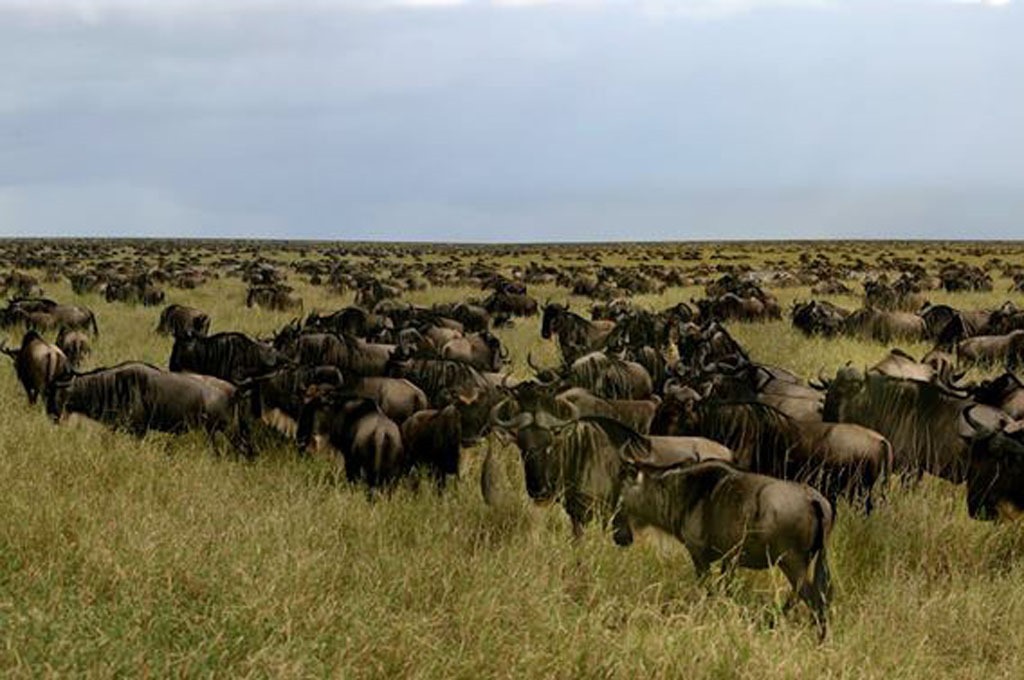
wildebeest grazing at the savannah
Conclusion: Witnessing the Great Migration in Africa
The Great Wildebeest Migration is a once-in-a-lifetime event that every wildlife lover should experience. Whether you’re planning a trip to Tanzania’s Serengeti or Kenya’s Maasai Mara, the migration offers an unparalleled opportunity to witness nature at its most raw and powerful. With the right planning, timing, and a little bit of luck, your migration safari will leave you with unforgettable memories of Africa’s breathtaking wildlife.

